Alan Colman
BehavDT: A Behavioral Decision Tree Learning to Build User-Centric Context-Aware Predictive Model
Dec 17, 2019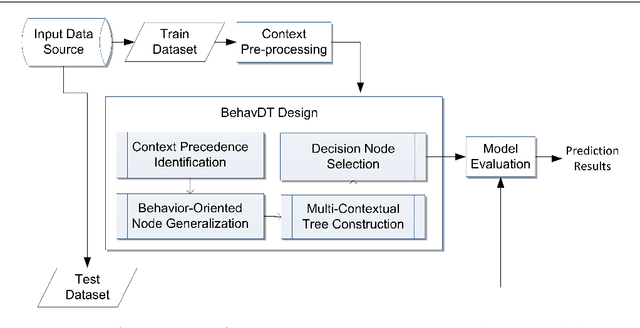

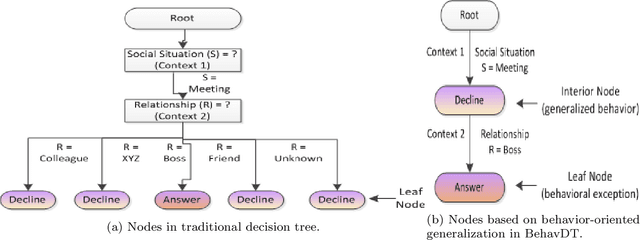
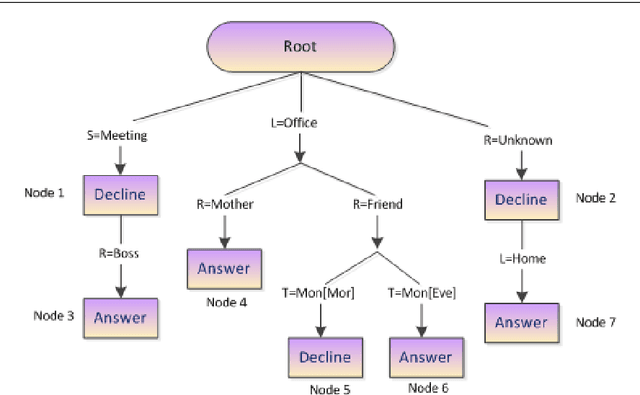
Abstract:This paper formulates the problem of building a context-aware predictive model based on user diverse behavioral activities with smartphones. In the area of machine learning and data science, a tree-like model as that of decision tree is considered as one of the most popular classification techniques, which can be used to build a data-driven predictive model. The traditional decision tree model typically creates a number of leaf nodes as decision nodes that represent context-specific rigid decisions, and consequently may cause overfitting problem in behavior modeling. However, in many practical scenarios within the context-aware environment, the generalized outcomes could play an important role to effectively capture user behavior. In this paper, we propose a behavioral decision tree, "BehavDT" context-aware model that takes into account user behavior-oriented generalization according to individual preference level. The BehavDT model outputs not only the generalized decisions but also the context-specific decisions in relevant exceptional cases. The effectiveness of our BehavDT model is studied by conducting experiments on individual user real smartphone datasets. Our experimental results show that the proposed BehavDT context-aware model is more effective when compared with the traditional machine learning approaches, in predicting user diverse behaviors considering multi-dimensional contexts.
CalBehav: A Machine Learning based Personalized Calendar Behavioral Model using Time-Series Smartphone Data
Sep 02, 2019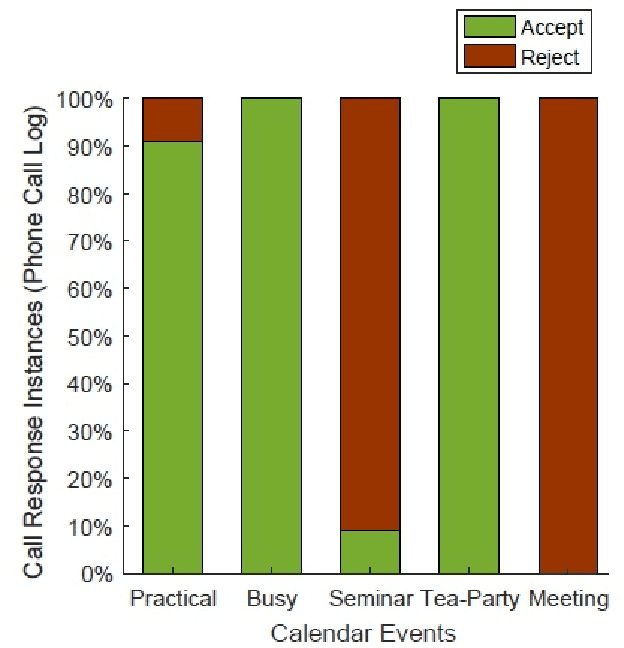
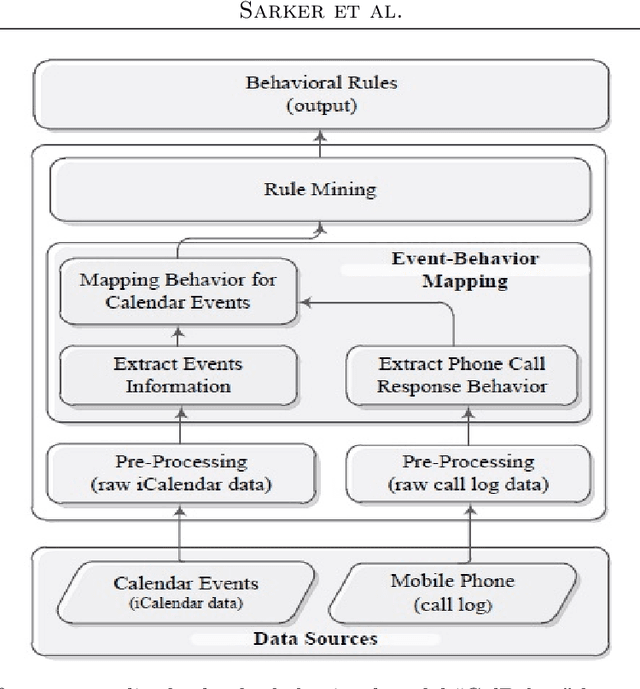
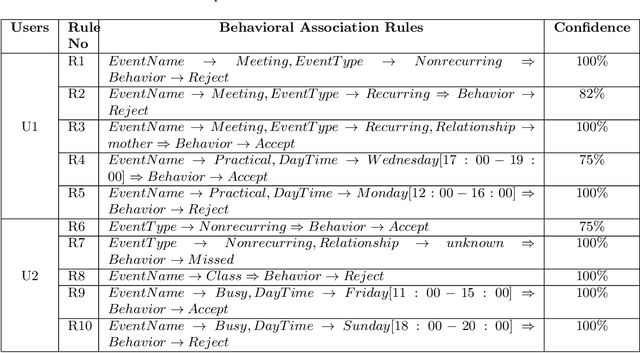
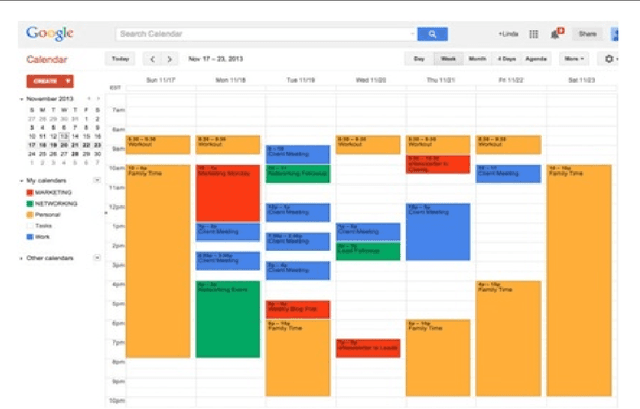
Abstract:The electronic calendar is a valuable resource nowadays for managing our daily life appointments or schedules, also known as events, ranging from professional to highly personal. Researchers have studied various types of calendar events to predict smartphone user behavior for incoming mobile communications. However, these studies typically do not take into account behavioral variations between individuals. In the real world, smartphone users can differ widely from each other in how they respond to incoming communications during their scheduled events. Moreover, an individual user may respond the incoming communications differently in different contexts subject to what type of event is scheduled in her personal calendar. Thus, a static calendar-based behavioral model for individual smartphone users does not necessarily reflect their behavior to the incoming communications. In this paper, we present a machine learning based context-aware model that is personalized and dynamically identifies individual's dominant behavior for their scheduled events using logged time-series smartphone data, and shortly name as ``CalBehav''. The experimental results based on real datasets from calendar and phone logs, show that this data-driven personalized model is more effective for intelligently managing the incoming mobile communications compared to existing calendar-based approaches.
* 16 pages, double column
Individualized Time-Series Segmentation for Mining Mobile Phone User Behavior
Nov 15, 2018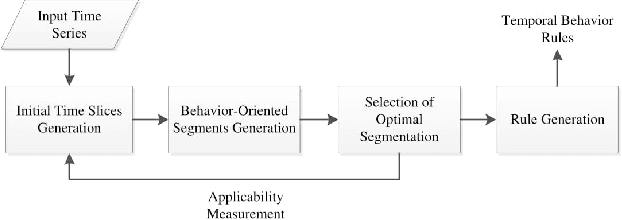
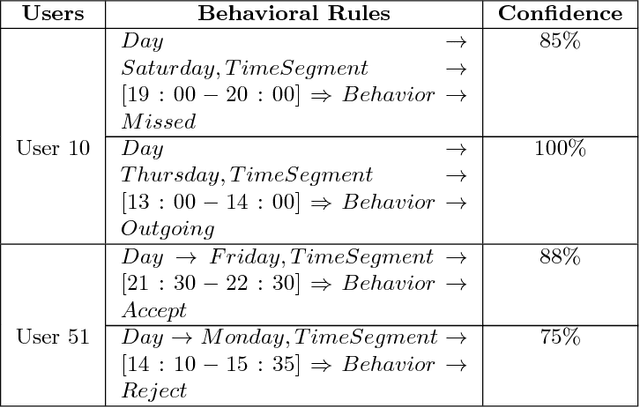

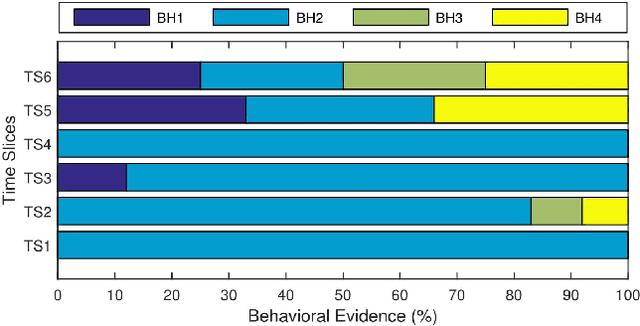
Abstract:Mobile phones can record individual's daily behavioral data as a time-series. In this paper, we present an effective time-series segmentation technique that extracts optimal time segments of individual's similar behavioral characteristics utilizing their mobile phone data. One of the determinants of an individual's behavior is the various activities undertaken at various times-of-the-day and days-of-the-week. In many cases, such behavior will follow temporal patterns. Currently, researchers use either equal or unequal interval-based segmentation of time for mining mobile phone users' behavior. Most of them take into account static temporal coverage of 24-h-a-day and few of them take into account the number of incidences in time-series data. However, such segmentations do not necessarily map to the patterns of individual user activity and subsequent behavior because of not taking into account the diverse behaviors of individuals over time-of-the-week. Therefore, we propose a behavior-oriented time segmentation (BOTS) technique that takes into account not only the temporal coverage of the week but also the number of incidences of diverse behaviors dynamically for producing similar behavioral time segments over the week utilizing time-series data. Experiments on the real mobile phone datasets show that our proposed segmentation technique better captures the user's dominant behavior at various times-of-the-day and days-of-the-week enabling the generation of high confidence temporal rules in order to mine individual mobile phone users' behavior.
* 20 pages
An Improved Naive Bayes Classifier-based Noise Detection Technique for Classifying User Phone Call Behavior
Dec 01, 2017
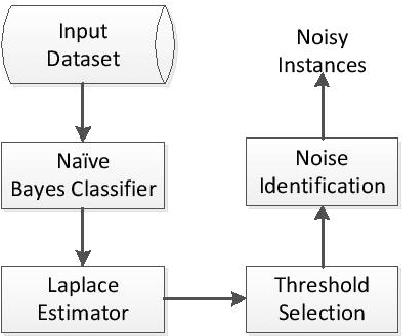
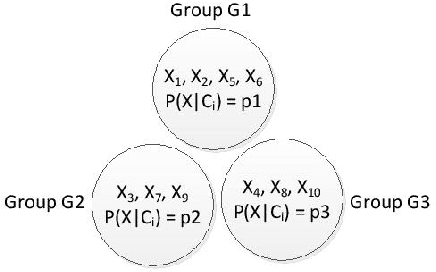
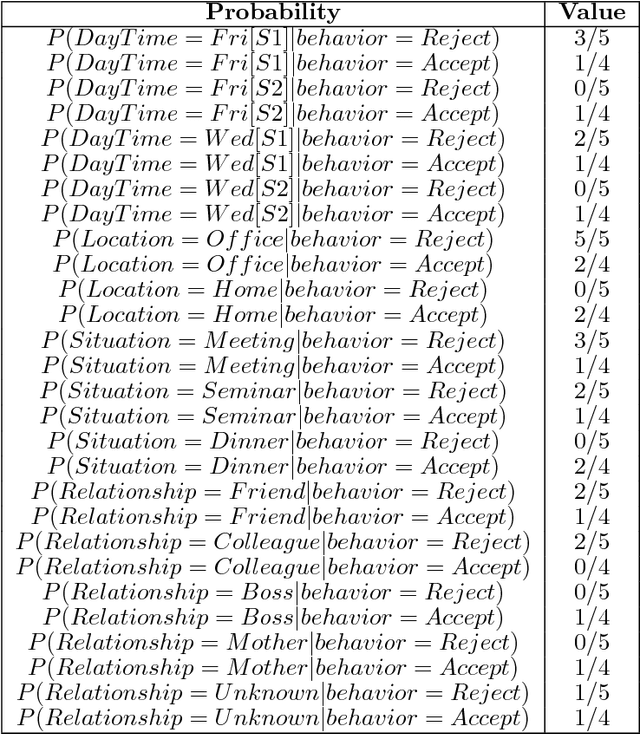
Abstract:The presence of noisy instances in mobile phone data is a fundamental issue for classifying user phone call behavior (i.e., accept, reject, missed and outgoing), with many potential negative consequences. The classification accuracy may decrease and the complexity of the classifiers may increase due to the number of redundant training samples. To detect such noisy instances from a training dataset, researchers use naive Bayes classifier (NBC) as it identifies misclassified instances by taking into account independence assumption and conditional probabilities of the attributes. However, some of these misclassified instances might indicate usages behavioral patterns of individual mobile phone users. Existing naive Bayes classifier based noise detection techniques have not considered this issue and, thus, are lacking in classification accuracy. In this paper, we propose an improved noise detection technique based on naive Bayes classifier for effectively classifying users' phone call behaviors. In order to improve the classification accuracy, we effectively identify noisy instances from the training dataset by analyzing the behavioral patterns of individuals. We dynamically determine a noise threshold according to individual's unique behavioral patterns by using both the naive Bayes classifier and Laplace estimator. We use this noise threshold to identify noisy instances. To measure the effectiveness of our technique in classifying user phone call behavior, we employ the most popular classification algorithm (e.g., decision tree). Experimental results on the real phone call log dataset show that our proposed technique more accurately identifies the noisy instances from the training datasets that leads to better classification accuracy.
 Add to Chrome
Add to Chrome Add to Firefox
Add to Firefox Add to Edge
Add to Edge